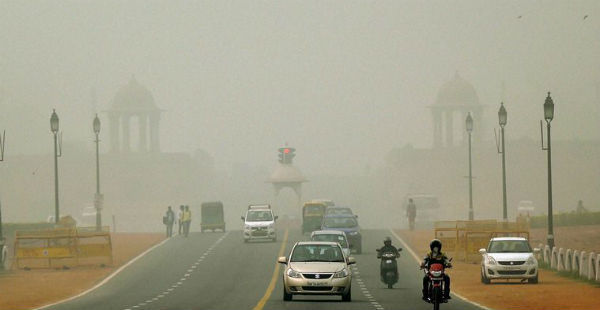
Delhiites woke up to a blanket of smog today morning which clearly indicated a spike in the pollution levels post Diwali. As anticipated, the air quality in Delhi and NCR is on a rise after the festival of Diwali. Skymet Weather has already predicted about the more-worsening pollution levels post the festival.
At around 11 PM, the Delhi Pollution Control Committee's (DPCC) RK Puram checking station noted PM2.5 and PM10 at 878 and 1,179 micrograms for every cubic meter respectively. The normal 24-hour moving normal of PM 2.5 and PM 10 as against the reasonable of PM 2.5 60µg/m³ while PM10 100 µg/m³ were 154 and 256 micrograms for every cubic meter individually, as indicated by the System of Air Quality and Weather Forecasting and Research (SAFAR).
The circumstance was comparative, if not more awful, in the neighboring districts of Delhi, for example, Gurgaon, Noida, and Ghaziabad. An 'extremely poor' air quality record (AQI) implies that individuals may experience the ill effects of respiratory sicknesses on a drawn-out introduction to such air.
[yuzo_related]
As per Skymet Weather, presently, the winds over Delhi and NCR were very light in nature and during the night time, winds were almost calm. Due to the absence of moderate winds, the pollution levels over Delhi and NCR topped up.
Additionally, the smoke of firecrackers during Diwali as well as the local pollution such as vehicular traffic and construction dust particles too added to the already deteriorating air quality.
Click to see live air pollution status across Delhi and NCR
Skymet Weather further reiterates whenever the winds are light and the temperature is reduced during the late night and early morning hours, haze or mist forms near the earth’s surface.
Further, the smoke and dust particles get mixed with the haze and mist and form a layer of pollution which remains suspended near the earth’s surface for longer duration which is the case present over the capital city of the country and its adjoining regions.
Now also a significant increase in the wind speed is not anticipated for next 24 hours. Therefore, the pollution level will remain high. However, after 24 hours, dry winds from the northwest direction is likely to start blowing over the region. These winds will pick up speed and may reach to 10-15 kmph, further aggravating to 20 kmph at times.
These winds will be helpful in blowing away the pollutants and will help in reducing the rising pollution levels.
Image Credit: Indian Express
Any information taken from here should be credited to skymetweather.com


